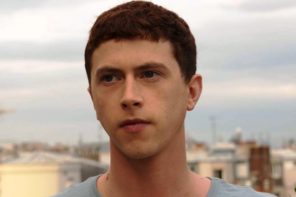‘Reinventing Marvin’ will screen at the Alliance Française French Film Festival and the Melbourne Queer Film Festival over March
For anyone who ever felt hopelessly unable to explore an early inkling of their sexual identity for fear of terrifying brutality, the school-set scenes in French filmmaker Anne Fontaine’s Reinventing Marvin (Marvin ou la Belle Éducation) may be unnerving.
Winning the Queer Lion at last year’s Venice Film Festival and screening at both the Alliance Française French Film Festival and the Melbourne Queer Film Festival, Reinventing Marvin is based loosely on one of our favourite queer books of last year, Édouard Louis’harrowing The End of Eddy.
The author came to the director of both Coco Before Chanel (Coco Avant Chanel) and The Innocents (Les Innocentes), asking her to adapt his account of growing up poor in a working class rural village, where being gay wasn’t an option.
Although gripped by the book, Fontaine had her own vision for realising it on screen. “I said to him, if I’m doing a film about the evolution of this young boy, I would not do only the childhood,” she tells SBS Sexuality over the phone via a translator. “I want to have the whole journey, how he can be outside of this nightmare.”
The film takes considerable poetic license, so much so that Louis and his novel are not listed in the credits alongside Fontaine’s co-writer Pierre Trividic. Extending beyond the tortuous school days of a young Marvin Bijoux (Jules Porier), we trace the journey of his young adult self (Finnegan Oldfield) as he makes his tentative way through the interwoven Parisian gay and theatrical scenes.
Marvin has ample assistance in the welcome presence of Elle star Isabelle Huppert, playing a magnificently forthright version of herself, and an eventual mentor. “When I decided to make him a theatre actor, I very quickly thought about Isabelle, because she could, in real life, be interested by another very young actor with talent. I think she could say yes. Of course it is like a fairy tale in a way, but I think in life you can have this kind of chance, and also she has the humour to play herself.”
As great as Huppert’s presence is, mirroring the role of Catherine Mouchet’s teacher who suggests a possible route out for the younger Marvin through drama, the childhood scenes burn brightest in Reinventing Marvin, thanks to Porier’s incredible performance. The pain and confusion etched in his young face is simply heartbreaking.
Fontaine saw around 300 boys for the role, but it was this inexperienced newcomer who leapt out, and not just because of his uncanny resemblance to Oldfield, who was cast first. “I was very impressed by the depth of him,” Fontaine says. “I made him play those situations with violence, but also desire, this ambiguity. He was amazing because he was so pure and so true and also very subtle, very intelligent in the way he expressed his feelings.”
Marvin sneaks stolen glances at tussling men in a market place, and then flinches at his own audacity. He retreats from verbal and threatened physical abuse from his alcoholic father (Grégory Gadebois), who is unable to comprehend the gentle nature of his son. There’s also the perversely erotic assaults inflicted by his school tormentor who, like so many of his supposedly disgusted brethren, strangely subverts queer desire, forcing Marvin to lick his nipples.
One way Fontaine shielded her young star from the harshness of the bullying scenes was to choreograph them as if a dance. She also brought a great deal of empathy to the set, recalling her own trying times at school, and the possible future she writes for Eddy turned Marvin draws heavily on her early discovery as an actress, plucked from ballet class by director Robert Hossein to play Esmeralda in a theatrical production of The Hunchback of Notre Dame.
“I was very surprised, because I never had acting school and also my grandmother is from this kind of very lower class with prejudices and conventions,” Fontaine recalls. “She was a kind of character that could be in the Bijoux family and I am very interested by the way you can reinvent your life, even if you have very bad or difficult beginnings. That makes me happy, that there is hope somewhere.”
Flashing forwards and back again as Marvin recreates his painful youth on stage with Huppert, to great acclaim, there’s playfulness in the meta-textual way in which the movie attempts to reconcile past and present. “The young person you were is always looking forward to you as an adult,” Fontaine says, “and also as an adult, you are always looking back at when you were a child. In a way, the two ages are constructing the future.”
This includes the promise of a possible healing through an emotional reunion with his Marvin’s father. “He doesn’t understand his son at all, but I think it was very important for the movie to give this character a chance to move. A little, of course, not very far, but it’s very powerful. You can educate your parents, maybe, the children sometimes.”
SBS by Stephen A. Russell




